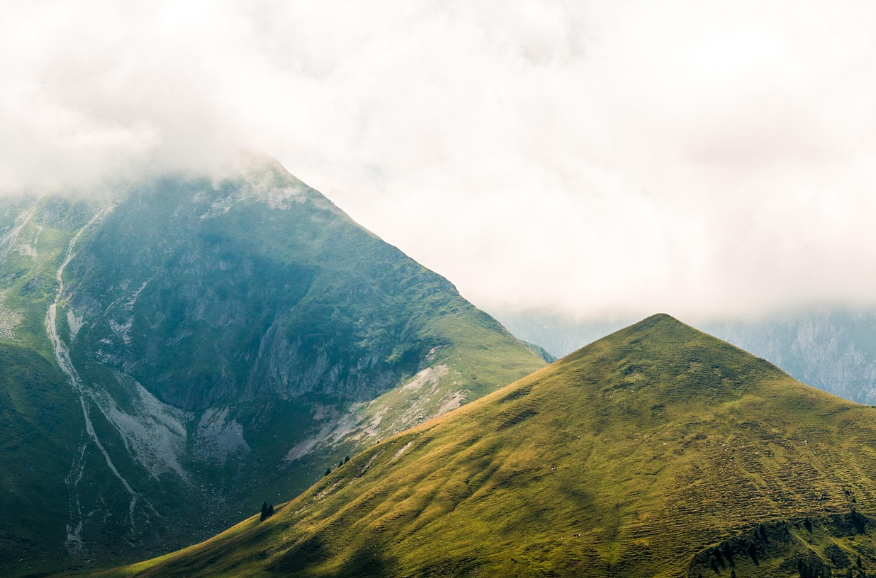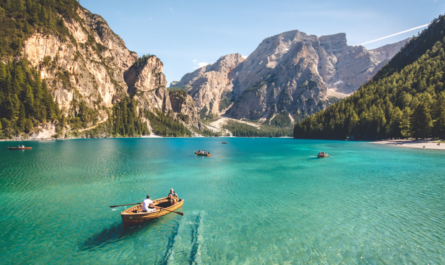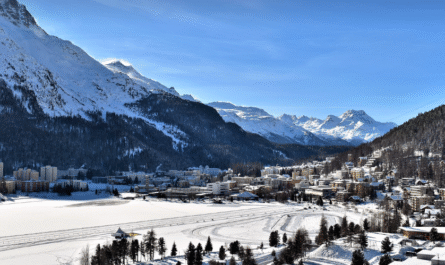When travelers dream of the Swiss Alps, they often picture the Matterhorn’s iconic silhouette or the bustling slopes of Zermatt and Verbier. Yet tucked into the south‑eastern corner of Switzerland lies the Engadin Valley—a high‑altitude plateau carved by glaciers and guarded by granite peaks, where Romansh villages retain medieval street plans and crystal lakes mirror larch forests that turn golden each autumn. Although St. Moritz headlines most brochures, the wider Engadin—stretching roughly 80 kilometres from Maloja Pass to the Austrian border—remains under‑explored compared with Switzerland’s marquee destinations. This guide unpacks the valley’s geography, seasons, culture, outdoor adventures, and culinary surprises, arming you with insider knowledge to craft an unforgettable itinerary that honours both nature and local heritage.
1. Geography and Micro‑Regions: A Quick Orientation
Upper Engadin (Oberengadin)
Ranging between 1 ,700 and 1 ,800 metres in elevation, the Upper Engadin plateau hosts a chain of turquoise lakes—Sils, Silvaplana, Champfèr, and St. Moritz—linked by the Inn River. The broad valley floor allows sunlight to linger even in winter, earning it the moniker “the roof of the Alps.” St. Moritz is the commercial and sporting nucleus, but storybook hamlets like Sils Maria and Bever showcase quieter charm.
Lower Engadin (Unterengadin)
Past Zernez, the valley narrows into a V‑shaped gorge flanked by limestone walls and dense pine. Villages such as Guarda, Ardez, and Sent perch on terraces above the rushing Inn. Architectural highlights include sgraffito‑adorned façades—chalk designs etched into pastel stucco, a Renaissance art form unique to this corner of Grisons canton.
Side Valleys and Passes
- Val Roseg and Val Morteratsch: Glacier-carved amphitheatres ideal for hiking or horse‑drawn sled rides.
- Val Fex: A motor‑free valley where wooden sleighs replace taxis and silence becomes a tangible luxury.
- Maloja Pass: A serpentine road descending into Italy’s Val Bregaglia, merging Swiss precision with Mediterranean flavour in a single afternoon.
2. Seasons and Signature Experiences
Winter (December–March)
- Nordic Paradise: 220 kilometres of immaculately groomed cross‑country ski tracks traverse frozen lakes and snow‑laden forests. The annual Engadin Ski Marathon draws 14 ,000 skiers across a 42‑kilometre course from Maloja to S‑chanf.
- Alpine Icons: Corviglia, Corvatsch, and Diavolezza ski areas provide a combined 350 kilometres of pistes, plus the legendary 10‑kilometre Hahnensee run that spills into St. Moritz Bad.
- Cresta Run & Snow Polo: Daredevils hurtle head‑first down a natural ice track, while the world’s only snow‑polo tournament unfolds on the frozen lake, both echoing the valley’s century‑old sporting pedigree.
Spring (April–May)
Snow lingers on peaks while meadows bloom primrose and glacier buttercup. Mountain railways are quieter, and hotels halve their rates. It’s shoulder season for cyclists training on sun‑drenched valley roads or photographers chasing “ice break” when frozen lakes fracture into geometric mosaics.
Summer (June–August)
- Hiking & Trail Running: More than 500 kilometres of signed paths lead from larch forests to 3 ,000‑metre passes. Iconic routes include the Panorama Trail from Muottas Muragl and the glacier‑flanked trek to Chamanna Boval hut.
- Sailing & Kitesurfing: Maloja wind funnels reliably down the valley each afternoon, turning Lake Silvaplana into Europe’s highest windsurfing arena.
- Cultural Festivals: Engadin Festival fills 17th‑century churches with chamber music, while UNESCO‑listed chalandamarz processions banish winter with cowbells and whip cracks.
Autumn (September–mid‑October)
This is arguably the valley’s most photogenic season—alpine larches ignite in amber hues against cobalt skies. Gastronomic events celebrate game meats and mushroom harvests, and the quieter trails invite contemplative walks before snow returns.
3. Outdoor Adventures Beyond the Obvious
Glacier Excursions
Guided glacier hikes across Vadret Pers or Vadret Morteratsch allow non‑alpinists to rope‑up safely and learn crevasse navigation. The Diavolezza–Morteratsch traverse culminates with fondue at Chamanna Boval, its terrace overlooking a braided ice highway.
Via Ferrata “Il Quar”
Just outside Pontresina, this iron‑rung route climbs 300 vertical metres alongside waterfalls and gneiss slabs. It’s suitable for athletic beginners and rewards climbers with panoramas stretching to Italy’s Piz Palü.
Wild‑Swimming Circuits
Early risers dip into Staz Lake at dawn, steam curling off glassy water while peaks blush pink. Braver souls tackle the “Engadin Ice Trail” in late autumn, collecting plunges in four unheated lakes for charitable pledges.
High‑Altitude Biking
The Bernina Express Trail parallels the UNESCO railway line over viaducts and through larch stands, offering a gravity‑assisted ride back to Pontresina. E‑MTB rentals make altitude gain accessible to varied fitness levels.
4. Cultural Tapestry: Romansh Heritage Meets Modern Art
Language & Folklore
Romansh, Switzerland’s fourth national language, survives most robustly in Lower Engadin. Local schools still teach in Vallader dialect; street signs read “Bun di” (good day) and shops display handcrafted “pizoccher” pasta. Storytelling evenings in Guarda recount the legend of Schellenursli, a boy whose cowbell quest saved spring—a tale memorialised in children’s books and a hillside sculpture trail.
Engadiner Häuser
Traditional farmhouses combine stone foundations with sun‑darkened larch facades. Heavy entrance doors open into “sulèr” hallways where wheat once dried above cowsheds, a design that warmed living quarters via rising animal heat. Look for ornate “sgraffito” vines and family crests etched into lime plaster, particularly in Ardez’s Caratsch quarter.
Artistic Nodes
- Nietzsche‑Haus, Sils Maria: Philosopher Friedrich Nietzsche drafted parts of Thus Spoke Zarathustra here; his Spartan summer room remains intact.
- Muzeum Susch: A deconsecrated monastery turned contemporary‑art labyrinth, chiselled into mountain rock, hosting avant‑garde exhibitions on gender and ecology.
- Segantini Museum: Domed gallery showcasing Giovanni Segantini’s Alpine Divisionist canvases—ethereal depictions of Engadin shepherd life under luminous skies.
5. Gastronomy: From Alpine Simplicity to Michelin Stars
Hearty Classics
- Pizzoccheri Engiadinais: Buckwheat pasta ribbons tossed with mountain cheese and chard, distinct from its Valtellina cousin by the addition of crispy onions.
- Capuns: Chard parcels stuffed with spätzli dough, bacon, and herbs, simmered in bouillon until silky.
- Nusstorte: Short‑crust walnut caramel tart invented in 1926 by a Scuol baker, now a must‑bring souvenir wrapped in red paper.
Fine Dining
St. Moritz alone claims six Michelin‑starred establishments; Ecco St. Moritz’s chef Rolf Fliegauf plates snow‑white turbot with pine‑smoked beurre blanc, marrying local foraging with haute techniques. In Pontresina, Gianotti Bakery elevates Engadin nut cake with Engadiner honey glaze and single‑origin hazelnuts.
Farm‑to‑Table Tavolatas
Summer evenings see long communal tables pop up in hay meadows—chefs from surrounding villages collaborate on five‑course menus using foraged chanterelles, alpine lamb, and rose‑hip sorbet. Guests arrive via horse‑drawn wagons, lanterns guiding the twilight return.
6. Wellness and Slow‑Travel Rituals
Mineral Baths
- Bogn Engiadina Scuol: Thermal pools infused with naturally carbonated spring water that tastes faintly of iron, believed to relieve rheumatism since the 14th century.
- Ovaverva St. Moritz: Combines lap pools with rooftop Jacuzzis facing Piz Rosatsch—a post‑ski balm.
Forest Bathing (Waldbaden)
Upper Engadin tourism board offers guided mindfulness walks through God da Staz larch wood. Studies show inhaling phytoncides (wood‑essential oils) lowers cortisol and boosts immune function—Engadin’s crisp air intensifies the effect.
Alpine Aromatherapy
Local distilleries in Vnà extract stone‑pine and arnica oils used in après‑ski massages; hotel spas often let guests craft personalised salves to take home, grounding memories in scent.
7. Sustainable Travel Tips
- Rail over Road: The Rhaetian Railway’s Bernina and Albula lines climb spiral viaducts and loop tunnels—engineering marvels powered increasingly by hydroelectricity, reducing car traffic in fragile ecosystems.
- Stay in Historic Conversions: Family‑run “Chesa” guesthouses preserve Engadiner architecture, funneling revenue into façade restoration rather than new builds.
- Refill Culture: Mineral fountains in Scuol and Pontresina offer iron‑rich water; reusable bottles cut plastic waste.
- Seasonal Eating: Opt for menus featuring Engadin lamb (transhumance grazing maintains biodiversity) and summer‑harvested rhubarb rather than imported produce.
- Respect Trail Etiquette: Close pasture gates, yield to uphill hikers, and keep dogs leashed near chamois habitats.
8. Sample Five‑Day Itinerary
Day 1: St. Moritz & Lake Circuit
Morning funicular to Muottas Muragl sunrise platform. Descend via the Panorama Trail to Pontresina. Afternoon pedal‑boat on Lake St. Moritz; evening aperitivo at the Kulm Hotel’s Dracula Club.
Day 2: Glacier Day
Take Bernina Express to Diavolezza; guided hike across Vadret Pers, lunch at Chamanna Boval. Dine on capuns in Samedan’s La Padella, unwind at Mineralbad & Spa Rooftop Pool under stars.
Day 3: Cultural Immersion
E‑bike from Sils to Nietzsche‑Haus. Ferry across Lake Sils to Isola hamlet for perch fillets. Late‑afternoon, visit Muzeum Susch; overnight in a converted Engadiner farmhouse in Guarda.
Day 4: Lower Engadin Villages
Hike the Schellenursli Trail between Guarda and Ardez, photographing sgraffito façades. Mineral‑water tasting in Scuol, then soak at Bogn Engiadina. Dinner of venison ragout and polenta in Sent.
Day 5: Adventure Finale
Morning kitesurf lesson on Lake Silvaplana. Lunch picnic of local Bergkäse and walnut bread. Afternoon via ferrata Il Quar; sunset forest‑bathing session in God da Staz, concluding with raclette by an open fire at Lej da Staz hotel.
9. Practical Logistics
- Getting There: Zurich to St. Moritz via Chur on the scenic Albula line takes 3 h 20 min. From Milan, connect through Tirano and ride the panoramic Bernina Express.
- Getting Around: The Engadin Card (free with many hotel stays) covers regional buses, mountain railways, and certain cable cars.
- Altitude Adjustment: Upper Engadin sits around 1 ,800 m; hydrate well, pace hikes, and limit alcohol the first 24 hours.
- Currency & Costs: Swiss Franc (CHF). Mid‑range dinner ~CHF 35, mountain‑hut dorm ~CHF 70 half‑board, day ski pass ~CHF 79.
- Wi‑Fi & Connectivity: 4G available valley‑wide; remote huts may offer limited solar‑powered charging—carry a power bank.
Conclusion: An Invitation to Slow Wonder
The Engadin Valley’s magnetism lies in its contrasts: sun‑drenched meadows beneath icy glaciers, avant‑garde art galleries tucked inside 12th‑century walls, and adrenaline‑rich sports balanced by mineral‑bath serenity. It offers all the alpine archetypes—peaks, chalets, après‑ski—but with a quieter soul and a fierce commitment to heritage. Whether you come for powder runs, Nietzschean solitude, or walnut tart, the valley rewards curiosity with layers of nuance. Spend a week here and the light itself seems different—crisper, more crystalline—mirroring the clarity you feel after days of mountain air, Romansh lullabies in church bells, and lakes that look like portals to other worlds. For travellers ready to venture beyond Switzerland’s headline acts, Engadin stands ready to become not just a hidden gem but a lifelong muse.



